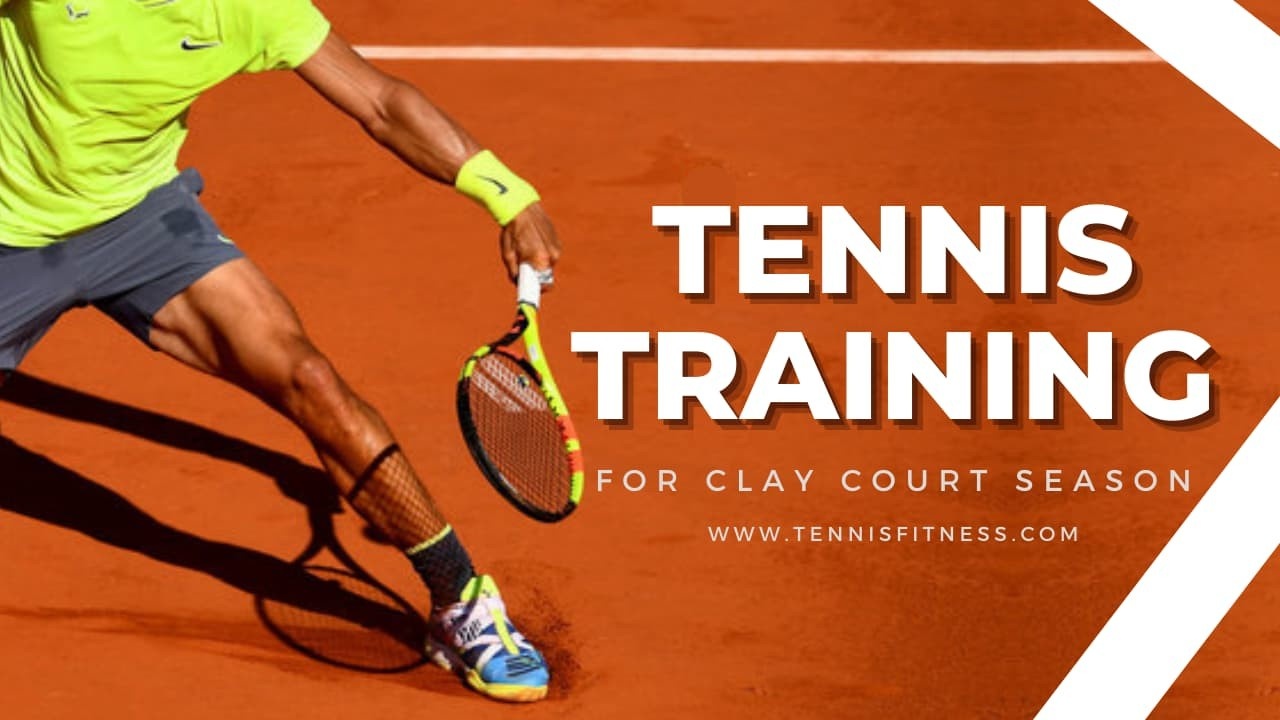Tennis Training For Clay Court Season
May 26, 2022
In terms of how hard it is to win a grand slam, The French Open in my opinion is the toughest grand slam to win. So to win it 13 times as Rafa Nadal has done is an incredible, mind-boggling effort. Most of us know how hard it is to win a few matches in a row or even a tournament!
We were fortunate enough to work over in one of the best Tennis Academies in Spain. During this time we were able to watch Rafa practice and play. You could see then he was a very special breed. His work ethic and focus on his tennis training were amazing, even as a developing player at the time he showed a high level of professionalism which has stuck with him to this day.
Having spent years working on the WTA & ATP tour, we have been lucky enough to watch him evolve, we have seen his game progress and admire the risks and changes he made. He has become a lot more aggressive, and changed his serve.... he has worked on becoming a more complete tennis player. The one thing that hasn't changed, is the intensity he works at and the positive attitude he possesses. He has also had the same people around him for a long time which has created stability for him, not many players past or present will keep the same team together for such a long period of time as he has.
So what does it take to succeed on clay?
Here are a few key areas;
- Quality time on the court - When I consult with players of all levels the first area I try to analyze is their training quality. I aim to work out if they are training with purpose, training at the right intensity, and if their training is goal-driven. What about you..... how would you rate yourself in those areas?
- Specific training - When it comes to tennis strength and conditioning training, you are crazy if you are not doing tennis-specific workouts. You need to hit the right areas of your body, work at the right intensities, and know how to best recover for tennis in order to maximize your game. To get more of an idea of what I am talking about, you can check out some Tennis Specific Programs here.
- The right attitude - This is key to playing well on any surface but especially on clay. Points are longer and harder to win on clay than on hardcourt, grass, or synthetic surfaces. So having a mindset that is positively focused, backed up by the willingness to just keep going is what is needed to do well on clay. I think Rafa typifies this!
The French Open is all about Volume…
The volume of time on the court playing with quality and control. On average points, it takes twice as long to play on clay compared to hardcourt or grasscourt, so you can imagine the amount of load placed on the body. Yes it is a “Softer surface” than a hard court and the ability to be able to slide has less impact on the body, but the volume is what takes its toll on you.
To be able to maintain the quality on clay, players need to have adapted to the amount of volume needed. This can take months to develop for most players and is typically why we rarely see anyone win on clay that is not a clay-court specialist. This is one reason why Rafa has dominated over the last decade. Most “Dirt Dogs” have spent years and years on clay. They have adapted to the volume and achieved the desired level of tennis fitness over some of their opponents.
So how do you best train for clay court tennis?
Tennis Training For Clay
When you look at tennis training for clay, you need to consider the volume impact and how to best deal with that.
What I call the "law of adaptability" plays a big role in preparing your body and if you understand it, it will help you realize what you need to do in order to reach new heights on clay.
When we talk about “Adaptability” we are referring to the body’s ability to perform tennis exercises or deal with stimulus, whether it be load, time, or speed, and then during and after recovery have a positive physical response (become stronger, increase stamina, develop better tennis agility, etc)
So you need to expose yourself to the right workloads and do the right training in order for your body to have a positive physical response and adapt to the volume. Do too much and you can burn out or get injured. Not doing enough will leave you falling short and running out of steam (most players fall into this category). You cannot expect to win matches, let alone tournaments if you are not physically prepared! My advice follow a structured tennis-specific training plan
Let’s look at the effect that an increase in volume can have.
- More wear and tear on the body (Neuromuscular system)
- More energy expenditure (burn more fuel)
- Mental fatigue (concentration, decision making)
Tennis Training on Clay is also different from other surfaces. Its unstable nature makes it more challenging for players to adjust. In fact, I know some top-level players who still don’t like to slide on clay. Learning to slide into the shot, then hit and the transition is so different from playing on hard or grass, where players are encouraged to take prep steps, plant their feet, and hit.
Sliding is a skill that doesn’t come easy for some and another reason why I feel it’s the toughest surface to play on.
To win points on clay can take more strategy, determination, and effort. Players with big serves, and weapons for forehands, and backhands get time taken off their ball due to the slower surface and they find more balls coming back over the net. Another reason why you need to be physically prepared.
This is when match strategy has a large impact; the slower surface almost evens out a tennis player’s power and makes it more of an attack on your opponent’s weaknesses, trying to break them down. Having the ability to stay focused for longer points, games, and sets, is vital to get the tennis results you want, you need a high level of determination to make that happen and the physicality to back it up, point after point (like rafa)
I have a great appreciation for all court surfaces and I would have to say that hard court is my preferred surface to watch and play on, but without a doubt, I respect clay court tennis the most and for those players that can get through 2 weeks of matches and still play a high level of tennis, I regard them as the toughest and fittest in the game!
If you want to improve your clay-court tennis, get started now with one of our Tennis Fitness Online Programs.


